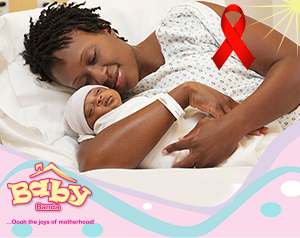The baby receives medication within 6 to 12 hours after delivery. Babies born to women infected with HIV receive an anti-HIV medication which helps prevent mother-to-child transmission of HIV. The babies receive AZT for 6 weeks. In certain situations, some babies may receive other anti-HIV medications in addition to AZT.
Testing the baby for HIV
HIV testing for babies born to women with known HIV infection is recommended at 14 to 21 days, at 1 to 2 months, and again at 4 to 6 months. Testing for babies is done using a virologic HIV test. Virologic HIV tests look directly for the presence of HIV in the blood.
• To be diagnosed with HIV, a baby must have positive results from two virologic HIV tests.
• To know for certain that a baby is not infected with HIV, the baby must have two negative virologic HIV tests, the first at 1 month of age or older, and the second at least 1 month later.
Babies who are HIV-infected receive a combination of anti-HIV medications to treat HIV.
• All HIV exposed infants should be seen in the health care facility within two weeks of delivery.
• For all HIV exposed infants, monthly follow up visits are recommended beginning at six weeks through 2 years.
• Where possible, visits should be linked to the immunization and growth monitoring visits.
• All HIV exposed infants should be started on co-trimoxazole prophylaxis from 6 weeks of age.
For infants who test HIV negative,
• If they have stopped breastfeeding for 2 months or more, stop co-trimoxazole
• If still breastfeeding, confirm status after stopping breastfeeding. Co-trimoxazole should be continued until two months after complete cessation of breastfeeding.
Ensure that your health provider
1. Confirms HIV status of your baby as early as possible.
2. If you do choose to breastfeed, ensure that you are supported to provide optimal infant feeding and particularly exclusive breastfeeding and to avoid mixed feeding in the first 6 months of life.
3. Monitor the child’s growth and development as a means of identifying the child who is failing to thrive and also as a tool for monitoring the effect of interventions.
4. Ensure that immunizations are started and completed according to the recommendations of the National Immunization Schedule













